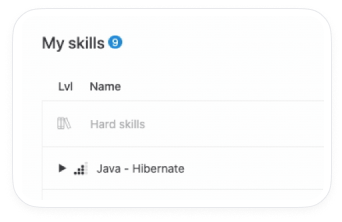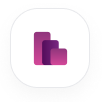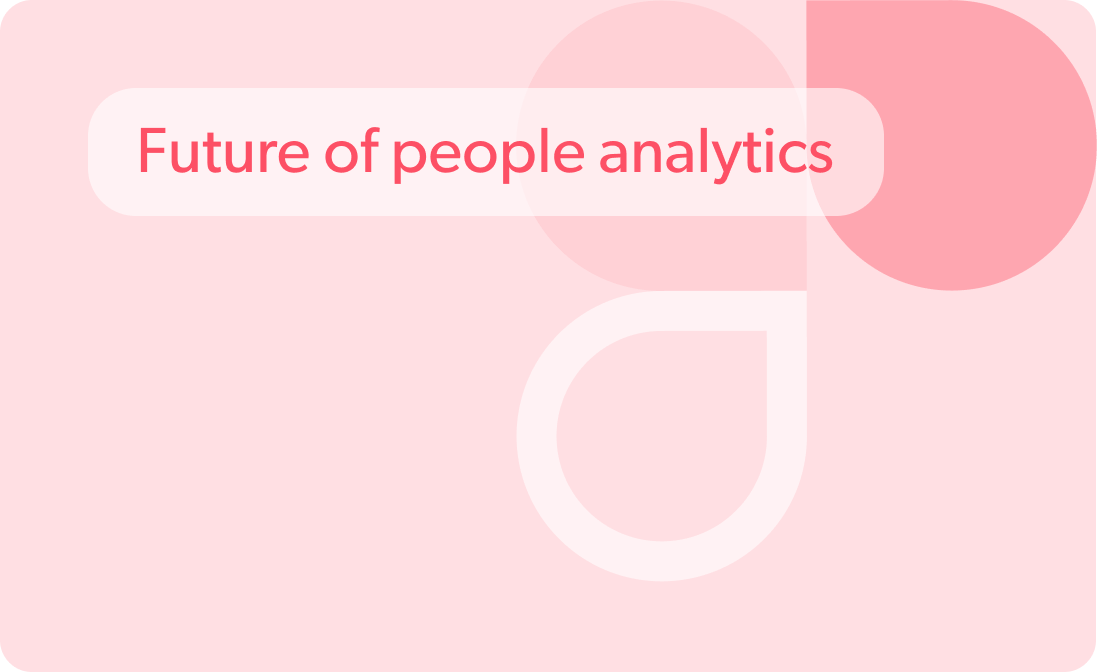From data to success: Exploring content intelligence tools for HR efficiency
Did you know that 77% of HR managers believe that a better understanding of the job market leads to more effective recruiting?
Imagine having the power to tap into this valuable insight and supercharge your recruitment efforts. Content intelligence makes it possible by harnessing the vast potential of artificial intelligence to automate content generation and unlock invaluable data-driven insights.
In this article, we’ll take you on a journey through the world of content intelligence in HR. From streamlining content creation to mastering the art of talent acquisition and fostering a culture of continuous learning, content intelligence paves the way for a brighter and more efficient future for HR professionals. Let’s go!
What is content intelligence?
Content intelligence strategy uses data-driven insights and analytics to optimize various HR processes and decision-making related to talent management, employee engagement, and workforce planning.
HR content intelligence involves collecting and analyzing data from various sources, such as employee surveys, performance evaluations, training records, and other HR-related metrics. By leveraging content intelligence tools and analytics platforms, HR professionals can gain valuable insights into the organization’s workforce and make informed decisions to enhance employee experiences and drive business outcomes.
Content intelligence empowers HR teams to move away from gut-based decisions and rely on data-backed insights to drive HR strategies. By understanding the underlying patterns and trends within the workforce, HR professionals can proactively address challenges, implement targeted solutions, and contribute to overall organizational success and employee satisfaction.
Pros and cons of using content intelligence tools in the HR domain
Content intelligence tools made it easier for organizations to update the approach to HR management. Data-driven tools leverage artificial intelligence and machine learning algorithms to analyze, process, and interpret vast amounts of HR-related data and content. By utilizing content intelligence in the HR domain, companies can make more informed decisions, enhance their recruitment processes, and improve the overall employee experience. However, like any technology, content intelligence tools have advantages and disadvantages that HR professionals should consider before implementation. In this short introduction, we will explore some of the key pros and cons of using content intelligence tools in the HR domain.
Advantages of content intelligence in HR tools
Enhanced decision-making. Content intelligence empowers HR professionals with data-backed insights, leading to better-informed decisions and improved overall HR strategies. Content intelligence-driven recruitment processes lead to quicker response times, providing candidates with a positive experience and enhancing the employer brand.
94% of HR managers acknowledge the positive impact of recruitment software on their hiring process. For instance, implementing a referral program within your company can yield valuable data showcasing its effectiveness, bolstering your arguments in favor of such initiatives.
Time and cost savings. By automating time-consuming tasks like resume screening and data analysis, HR teams can focus on more strategic aspects of talent management.
Data-based strategic workforce planning can yield significant cost savings of $6 million for every 100 employees. Implementing a workforce management solution can result in remarkable benefits, with potential savings of 6-10% within a year. This increase in ROI of 60% and reduced absenteeism by 40% present substantial opportunities for significant savings.
Personalized learning and development. Content intelligence helps identify employee strengths and weaknesses, enabling tailored learning programs for professional growth.
79% of surveyed business leaders preferred retaining current employees to hire new ones. Organizations adopting skills-based planning have a valuable opportunity to foster a learning culture and capitalize on emerging trends such as learning convergence, talent acquisition, talent development, and the significant increase in internal mobility.
Challenges and ethical considerations
Data privacy. Handling sensitive HR data requires strict adherence to data privacy laws and ethical considerations to safeguard employee information.
Ponemon Institute’s 2018 cost of a data breach study found that the average cost of a data breach globally was $3.86 million, a substantial portion of that cost attributed to the loss of sensitive HR data.
Bias mitigation. AI-powered content intelligence tools should be designed to minimize bias during data analysis and decision-making processes to ensure fair and equitable outcomes.
A survey by Deloitte in 2019 showed that 81% of respondents considered AI ethics and fairness an essential or significant issue.
Integration and implementation. Integrating content intelligence into existing HR systems may present challenges that require careful planning and collaboration with IT teams.
In a Deloitte Global Human Capital Trends survey, around 51% of respondents cited the “lack of understanding and skills” as a significant challenge in adopting AI and related technologies in their organizations. Integrating AI tools into HR systems may require additional technical expertise and coordination with IT teams.
See how content intelligence solutions work
Discover the transformative power of content intelligence in HR. Unleash AI’s potential to analyze HR-related content, automate candidate-job matching, identify skills gaps, and drive career advancement.
An overview of some of the most popular content intelligence tools
Media Peanut recently researched how HR professionals use automated content creation. Responses from 1,319 HR professionals indicated that they use AI to:
- Rewrite and enhance e-mails they originally crafted (34%).
- Write initial job description templates, then refine details by hand (21%).
61% of respondents replied they plan to incorporate AI in some manner into their daily workflow within the next two years. Below we’ll consider examples of tools based on specific use cases.
General job architecture maintenance
General job architecture maintenance refers to the ongoing process of managing and organizing job roles, job descriptions, and organizational skill requirements. It involves creating a well-structured and organized framework that defines the hierarchy of job positions, their respective responsibilities, required qualifications, and career progression pathways.
The tool “SAP SuccessFactors Human Experience Management (HXM) Suite” is a cloud-based HR software designed to empower individuals to reach their full potential while strengthening the connection of HR across the business. Here are some key points about the SAP SuccessFactors HXM Suite:
- The suite prioritizes the employee experience, understanding their needs, and delivering relevant experiences for employees, managers, candidates, new hires, HR leaders, and administrators.
- The tool includes various solutions such as talent intelligence for mobility, automated compliance for peace of mind, dynamic team support for new ways of working, work tech integrations to bring HR into the flow of work, and growth portfolio attributes for surfacing opportunities.
- The suite provides core HR solutions localized for more than 100 countries, making it adaptable to ever-changing regulations and compliance requirements.
Workday, Inc. is a cloud-based software vendor that provides solutions for human capital management (HCM), enterprise resource management (ERP), and financial management applications. Here are some features and capabilities of Workday’s software include:
- Workday’s HCM suite offers comprehensive applications for managing various HR-related tasks, including onboarding, talent management, performance management, compensation management, and benefits administration.
- Workday ERP encompasses planning in HCM, professional services automation, project management, finance, and analytics. It’s designed to support business processes and data transformation for enterprises.
- The system aims to streamline financial processes, provide real-time visibility, and enable data-driven financial decision-making.
smartData is a content intelligence platform developed by HRForecast. It utilizes artificial intelligence and data analytics to structure, categorize and analyze content, such as job postings, employee profiles, training data, learning courses, CVs, and more. Here are some of the key features and benefits of smartData in the context of general job architecture maintenance:
- smartData offers access to comprehensive labor market data and its analysis, allowing organizations to gather information on emerging job roles, skills, and workforce trends. It helps organizations identify future-proofed skills for specific job roles and shows the skills gaps in the current workforce.
- smartData delivers valuable insights on job architecture, staffing strategy, and workforce planning.
- The platform addresses various labor market questions, such as predicting the evolution of job roles and skills, identifying workforce trends among competitors, optimizing talent development, and exploring future operating and organizational models. smartData helps organizations address skill shortages by identifying global talent hotspots. It provides a deep location analysis that supports decision-making related to a global footprint.
Source: HRForecast
Future skill integration
Future skill integration refers to incorporating emerging or in-demand skills into an organization’s workforce to prepare for the evolving job market and stay competitive. As industries undergo rapid technological advancements and shifts in demand for specific skills, organizations need to ensure that their employees possess the right skills to meet future challenges.
Lightcast is a labor market analytics tool that uses data analysis techniques, including natural-language processing and AI tools, to provide actionable insights to employers, educators, and government agencies. It aims to bridge the gap between the labor market and the needs of various stakeholders, helping them make informed decisions related to skills, talent strategy, and workforce development. Here are some key points about the tool:
- Lightcast offers software products, APIs, and consulting projects to provide clear and actionable insights based on labor market data.
- The tool enables employers, educators, and government agencies to make practical skills-based decisions. It includes talent planning, workforce training, curriculum planning, economic development strategies, and job training programs.
- Lightcast pioneers the collection and big-data analysis of job postings from over 51,000 sources daily, including job boards, company websites, and other platforms. It extracts various elements such as job titles, responsibilities, skills in demand, experience and education requirements, salary estimates, etc.
The Textkernel tool is a suite of AI-driven technologies designed to revolutionize HR and recruitment by connecting people with suitable job opportunities. Here are some key functionalities and features of the Textkernel tool:
- Textkernel uses AI and ML algorithms to match job seekers with relevant job openings. It analyzes candidate profiles and job descriptions to find the best fit, increasing the chances of successful hires and reducing time-to-fill for positions.
- Textkernel provides valuable insights into the labor market. HR and staffing organizations can leverage this intelligence to make informed hiring strategies, talent acquisition, and workforce planning decisions.
- Textkernel is ISO 27001 certified, guaranteeing the highest data security and privacy standards. Customers can trust that their sensitive data is handled with utmost care and confidentiality.
smartData offers a flexible and tailored approach to workforce planning, allowing organizations to leverage data-driven insights and make informed decisions about their talent management strategies. The primary goal of smartData is to make HR data more structured and manageable. It helps HR managers and organizations to:
- Provides a common skills ontology, enabling organizations to standardize their workforce-related content around a shared set of skills. This standardization helps better organize and manage job roles, skill requirements, and career progression within the company.
- Automate recruiting by extracting and tagging skills from job postings, making it easier for recruiters to find the most suitable candidates for internal roles.
- Future-proof workforce by providing insights and updates on global jobs and skills, helping organizations prepare for the future job market, and ensuring their workforce remains relevant and competitive.
Source: HRForecast
Summing up the review: Would you like to get more answers?
Content intelligence empowers you as an HR leader to make data-backed decisions, moving away from gut-based approaches to enhance HR strategies. By analyzing data from various sources, such as employee surveys and performance evaluations, HR teams gain valuable insights that enable them to proactively address challenges and improve employee experiences, ultimately contributing to organizational success.
Let’s get in touch if you’d like to see how one content intelligence tool like smartData works in practice. See how to optimize your HR strategies, enhance employee experiences, and prepare your organization for the future job market.
Stay up to date with our newsletter
Every month, we’ll send you a curated newsletter with our updates and the latest industry news.






























 info@hrforecast.de
info@hrforecast.de
 +49 89 215384810
+49 89 215384810






